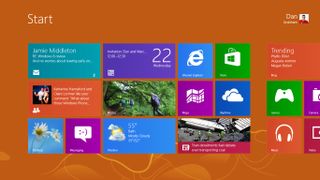How to buy a Windows 8 laptop, desktop or tablet
What to look for in a new Windows 8 PC

Windows 8 is now with us. Microsoft says it's the biggest thing since Windows 95 - its new user interface is certainly one of the biggest gambles Microsoft has made.
Windows has been brought kicking and screaming into the touchscreen era against a competitive backdrop of iPads, Android devices and even Microsoft's own Windows Phone smartphone OS.
Microsoft made attempts at retro-fitting previous versions of Windows with touch, but - quite frankly - it was a terrible thing.
Good news though - Windows 8 has been designed from the ground up to work perfectly with a touch screen.

The new interface clearly reflects this change - where there was once only a desktop, now sits a redesigned Start screen (also known as Modern UI) as well as the desktop with huge, colourful icons that allow you to easily navigate to all the applications within Windows 8 using the power of touch.
Those of you who still use a mouse and keyboard and prefer to spend the majority of your time at a desk shouldn't suddenly run for the hills, however.
Microsoft isn't expecting everyone to suddenly drop their old ways and start using touch exclusively from now on. The new interface, thankfully, also works perfectly well without a fancy touch screen.
Get daily insight, inspiration and deals in your inbox
Get the hottest deals available in your inbox plus news, reviews, opinion, analysis and more from the TechRadar team.
Because of this, Windows 8 is available on a variety of devices including desktop PCs, laptops, tablets and even all-In-ones, such as the Dell XPS One 27 Touch.
Buying a Windows 8 tablet
Not all versions of Windows 8 are alike, however, so you need to be careful that the PC you're buying comes with the features you're expecting. Windows 8 comes in three different iterations, including Windows RT, which is designed for touch screen devices; Windows 8 (for home users) and Windows 8 Pro - the most comprehensive of the bunch.
If you want an alternative to an iPad or Android device, then a Windows RT touch screen tablet is the perfect device for you, such as the Microsoft Surface - which starts at £399 for the basic version.
Be careful though, while Windows RT might look like Windows 8, it's essentially a stripped-down version which only runs the colourful new tiled Start interface, sod you can only use apps either pre-installed on a tablet (such as Mail or Messaging) or apps found on the Windows Store.
Let's make it clear: you cannot install software on the desktop as you would have in the past - it doesn't work anymore. If you want to operate in that sort of Windows environment a Windows RT tablet is not for you.
However, some tablets will start to appear that have a regular version of Windows 8 pre-installed, allowing you the combination of touch and apps as well as the practicality of the desktop interface.

For those used to Windows of old, wanting a the traditional desktop environment where they can install all their old legacy software, games and more, a Windows 8 or Windows 8 Pro machine will be what you're looking for. You can still get your fix of tablet action on either of these platforms.
Buying a Windows 8 laptop
If that's a case, there's plenty more conventional Windows 8 devices around. A laptop is a great alternative to a tablet because you still get good portability, especially if it's a super-slim and light Ultrabook like the Acer Aspire S7. You also get more power and speed if you go down the Ultrabook route.
The thing you need to ask yourself when buying a laptop is: will you really need a touch screen? Windows 8 will work fine without it, so unless you're planning to spend most of your time in the new Start interface it's not essential.
Some laptops are now featuring the technology built-in, so you might find you can shop around and buy a touch laptop without paying much more, such is the competitiveness of the premium laptop market at present.
Most Popular

